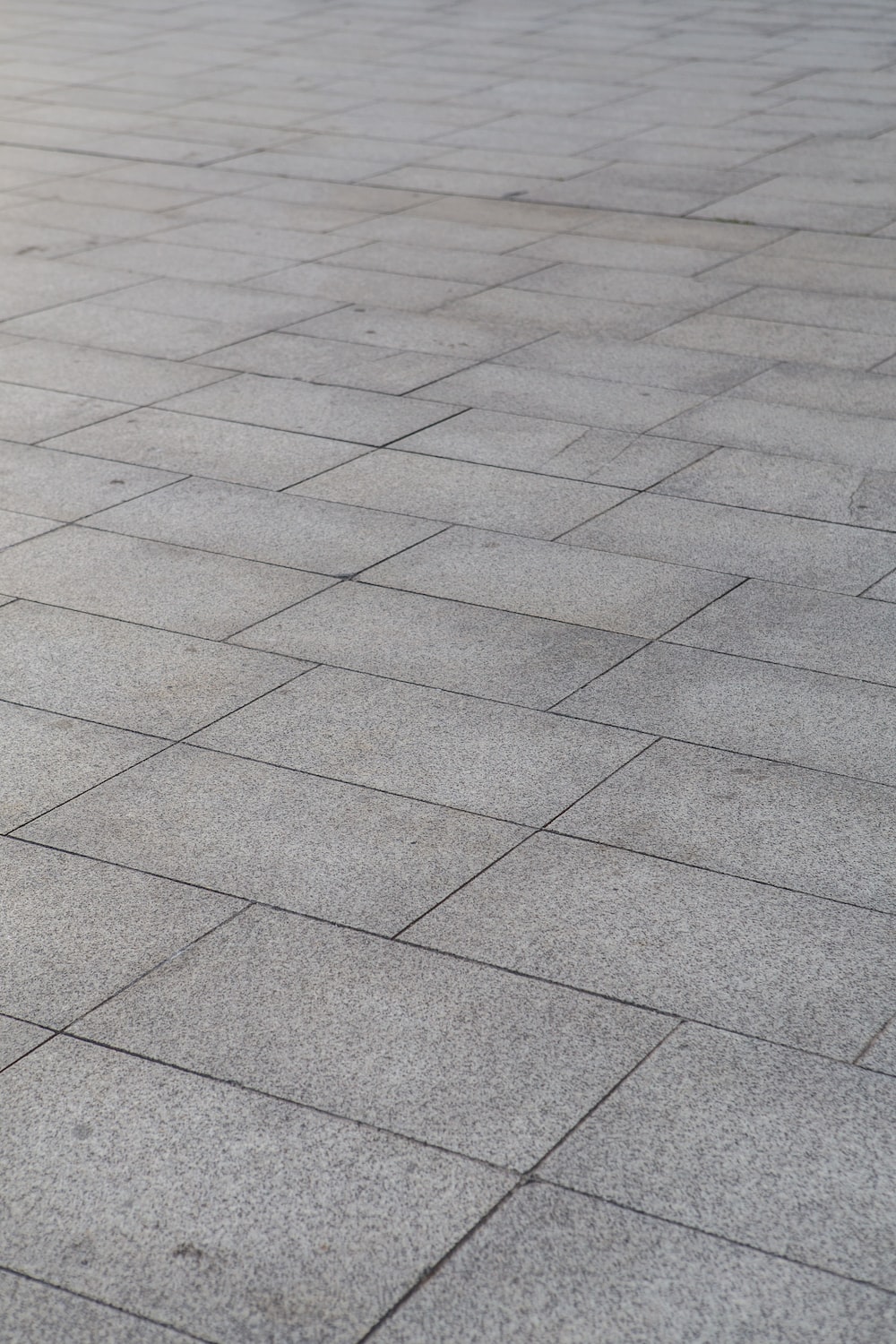Concrete stains can be unsightly and can diminish the overall appearance of your patio or other concrete surfaces.
Whether caused by oil spills, food stains, or other substances, removing these stains can be a challenging task. However, with the right methods and techniques, you can successfully rid your concrete of these blemishes.
In this article, we will explore the different types of concrete stains and the effective methods to remove them, effectively restoring the original shine of your concrete surfaces.
Key Points
Each type of stain requires a specific cleaning method to effectively remove the affected area without damaging the concrete surface.
1. Oil and grease stains: Blot up excess oil, sprinkle absorbent material and scrub with warm water and dish soap.
2. Rust stains: Use a commercial rust stain remover or apply a mixture of lemon juice/salt or white vinegar/baking soda. Scrub and rinse.
3. Paint stains: Blot wet paint, scrape off dried paint, apply paint remover/solvent, scrub, and rinse.
4. Mold and mildew stains: Create a solution of water and vinegar, apply, scrub, and rinse.
5. Tire marks: Use a commercial degreaser or baking soda/water mixture, scrub, and rinse.
6. Ink or marker stains: Blot with rubbing alcohol or acetone-soaked cloth and rinse.
If the stains persist, consider seeking professional help. These professionals can help accurately determine the condition of your concrete, apply the best cleaning methods, and revitalize your concrete surfaces.

Removing Stains From Concrete: Types and Ways To Remove
Concrete stains can come in various forms. Each type requires a specific method to effectively remove stains from concrete.
Understanding the nature of the stain and using the appropriate cleaning techniques can help you bring back the cleanliness and appearance of your concrete surfaces.
Oil Stains and Grease Stains
Oil-based stains are common stains that can be caused by vehicles or machinery leaks that get into your concrete floors or concrete driveways.
Removing oil stains from concrete is a fairly simple process. First, start by blotting up any excess oil or grease using paper towels or rags. This will help prevent the stain from spreading further.
Next, sprinkle an absorbent material like cat litter or baking soda over the stain. Leave it on for a few hours or overnight. This will allow the absorbent material to soak up the oil and lift it from the concrete.
Afterwards, sweep or vacuum up the absorbent material. Then, mix warm water and dish soap together and use a stiff brush to scrub the stained area. This will help break down any remaining oil residue.
For stubborn stains, you might need to use a specialized concrete cleaner or a pressure washer. Just make sure to follow the instructions on the cleaner or pressure washer for the best results.
Rust stains
Rust stains from concrete come from metal objects left on the concrete for a long time. To get rid of these stains, you have a few options.
You can use a commercial rust remover, or you can create a mixture of lemon juice and salt. These homemade solutions can work just as well.
Once you have your chosen solution, apply it directly to the stain and let it sit for a few minutes. This gives it time to penetrate the cement and break down the rust.
After that, grab a brush and scrub the area to help loosen the stain. Be sure to use a brush that won’t damage the concrete surface.
Finally, rinse the area with a hose or pressure washer to wash away the loosened rust and any residue from the cleaning solution. If needed, you can also use a detergent to ensure a thorough cleaning. Just make sure to follow the instructions on the detergent packaging.
Paint stains
To get rid of paint stains, start by scraping off as much paint as you can using a plastic scraper or putty knife.
After that, apply a paint remover or solvent according to the instructions on the product to soften the remaining paint.
Once the paint is softened, use a stiff brush to scrub the area, making sure to work the remover into the stain.
Afterwards, rinse the area thoroughly with water to eliminate any leftover residue. In case the stains are stubborn, you might need to repeat the process or consider using a pressure washer.
Always remember to test any products on a small, inconspicuous area of the concrete before applying them to the entire stain. This will help ensure that the product doesn’t cause any damage or discolouration to the surface.
Mould and mildew stains
Mould and mildew stains can be a common problem on concrete surfaces. These stains are often caused by excess moisture and can appear black or greenish in colour. Luckily, there’s a simple and effective method for removing these stains.
To start, you’ll need to create a solution using equal parts water and white vinegar. This solution is a powerful tool for tackling mould and mildew stains on concrete. Once you have your solution, apply it generously to the stained area.
After applying the solution, let it sit for a few minutes to allow it to penetrate the stain. This will help loosen the mould and mildew, making it easier to remove.
Next, grab a brush and scrub the stained area vigorously. This will help to further loosen the stains and ensure a thorough cleaning.
Once you’ve scrubbed the area, rinse it thoroughly with water. This will remove any remaining residue and leave your concrete looking fresh and clean. Be sure to rinse the area well to ensure that all traces of the solution and stains are gone.
Tire marks
If you have tire marks on your concrete surfaces like driveways or patios, there are ways to remove them easily. These tire marks are dark stains caused by the rubber from tires.
To get rid of them, you can use a commercial degreaser made specifically for concrete stains. Apply the degreaser, scrub with a stiff brush, and then rinse with water.
Another option is to make a mixture of baking soda and water. Apply the mixture to the stain, scrub it, and rinse thoroughly.
Tire marks on concrete can be unsightly, but fortunately, there are effective methods to remove them. Whether you choose a commercial degreaser or a baking soda mixture, both methods can help eliminate the stains. Remember to assess the severity of the stain before deciding which method to use.
With a little effort and the right technique, you can successfully remove tire marks from your concrete surfaces.
Ink or marker stains
If you have ink or marker stains on your concrete surfaces, don’t worry! Removing these stains is actually quite simple. All you need is some rubbing alcohol or acetone and a cloth.
To start, soak the cloth in rubbing alcohol or acetone and gently blot the stain. Then, apply the rubbing alcohol or acetone directly to the stain and let it sit for a few minutes.
This will help to break down the stain and make it easier to remove. Then, use the cloth to gently blot the stain, repeating the process if necessary until the stain is completely gone.
After you have successfully removed the stain, remember to rinse the area with water to remove any residue. This will ensure that your concrete surfaces look clean and fresh.
It’s important to note that this method works well for ink or marker stains specifically. For other types of concrete stains, such as rust or oil stains, you may need to use different techniques or products.
With these simple steps, you can say goodbye to ink and marker stains on your concrete surfaces and enjoy a clean and vibrant space once again.

How to Clean Your Concrete Surfaces Regularly
Cleaning concrete daily is important to maintain its appearance and prevent the buildup of dirt and stains. Here are the steps for cleaning your concrete daily:
1. Sweep: Start by sweeping the concrete surface to remove loose dirt, dust, and debris. Use a stiff broom or brush with firm bristles or a leaf blower to thoroughly clean the surface.
2. Scrub: Prepare a cleaning solution using warm water and a mild detergent or concrete cleaner. Mix the solution in a bucket according to the manufacturer’s instructions. Dip a stiff-bristled brush or push broom into the solution and scrub the concrete in small sections.
3. Rinse: After scrubbing, rinse the concrete thoroughly with clean water. You can use a hose with a spray nozzle attachment or a pressure washer, if available. Make sure to remove all the soap residue and dirt from the surface.
4. Dry: Allow the concrete to air dry completely before using it again. This will help prevent slip hazards and avoid the collection of dirt or moisture.
5. Repeat: Depending on the level of dirt and usage, this cleaning routine may need to be repeated daily or at regular intervals. Regular maintenance will help extend the lifespan of your concrete and keep it looking clean and presentable.
Keeping Your Concrete Patios and Driveways Protected with Sealants
Regularly cleaning and sealing your concrete is essential to maintain its clean and well-maintained appearance. By following a few simple steps, you can prevent stains and keep your concrete looking its best.
Applying a protective sealant to your concrete is highly recommended. A sealer creates a barrier that prevents stains from penetrating the pores of the concrete.
This makes it easier to clean spills and stains in the future. When choosing a sealer, make sure to select one that suits your specific needs. Follow the manufacturer’s instructions for application and maintenance to ensure optimal protection.

How Stone Protection Can Help You Remove Stains From Concrete Surfaces
Stone Protection is a trusted provider of expert cleaning and stain removal services for concrete surfaces. With our deep knowledge and understanding of different types of stains, we can accurately identify the stains and provide the most suitable and effective methods for removal.
With our expert service and commitment to delivering high-quality work, Stone Protection ensures long-lasting results that leave your concrete surfaces looking clean, pristine, and well-protected.
Frequently Asked Questions
What are the most effective methods to remove stains from concrete patios?
The most effective methods to remove stains from concrete patios include using a commercial concrete stain remover, creating a paste with TSP and water, or using a combination of liquid dishwashing detergent and hot water.
For tougher stains, you may also need to use a pressure washer, chemical paint stripper, or other specialized cleaning products.
How do I remove pet stains from concrete?
To remove pet stains from concrete, start by cleaning the affected area with a mixture of liquid dishwashing detergent and hot water.
Scrub the stain with a brush and then rinse the area thoroughly. For persistent pet odors, you may also need to use a commercial pet stain remover or an enzymatic cleaner to fully eliminate the odor.
What can I do to prevent stains on unsealed concrete?
To prevent stains on unsealed concrete, consider applying a concrete sealer to create a protective barrier against spills and stains.
Regularly clean and maintain the concrete surface, promptly address any spills or stains, and avoid using abrasive or harsh cleaning products that could damage the concrete.
How do I remove cement stains from concrete surfaces?
To remove cement stains from concrete surfaces, use a mixture of trisodium phosphate (TSP) and water to create a paste.
Apply the paste to the stained area, scrub it in with a brush, and let it sit for a short time before rinsing with hot water. For stubborn cement stains, you may need to repeat the process or use a commercial concrete cleaner.
What are the recommended methods for removing mud and foliage stains from concrete?
The recommended methods for removing mud and foliage stains from concrete include using a pressure washer, applying a commercial concrete cleaner, or creating a cleaning solution using liquid dishwashing detergent and hot water.
Depending on the severity of the stains, you may need to scrub the area with a brush to fully remove the blemishes.
How can I effectively remove efflorescence from concrete surfaces?
You can use a mixture of white vinegar and water to dissolve the efflorescence deposits. After applying the solution, scrub the area with a brush and rinse thoroughly with clean water.
If the efflorescence persists, consider using a commercial efflorescence remover or contacting a professional for expert advice on removal.
What should I do if I have an unsightly stain on my garage floor?
If you have an unsightly stain on your garage floor, start by cleaning the stained area with a commercial concrete cleaner or a mixture of trisodium phosphate (TSP) and hot water.
For tough or stubborn stains, you may need to use a pressure washer or specialized cleaning products designed for garage floors. Regular maintenance and prompt cleaning can help prevent future stains.





